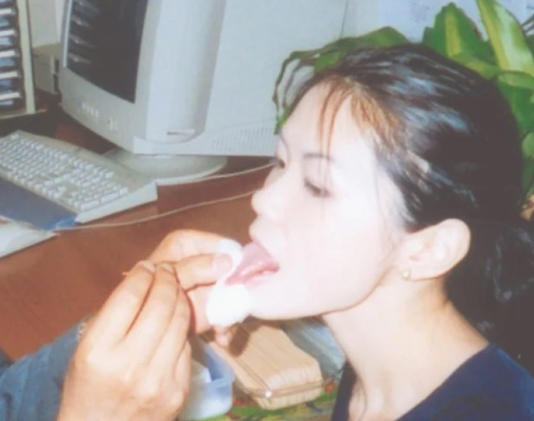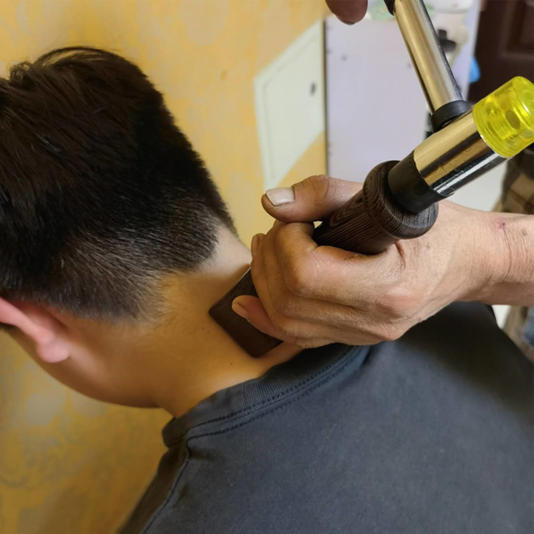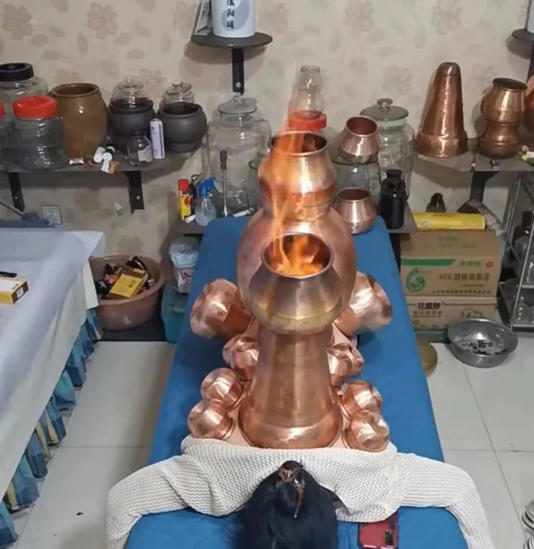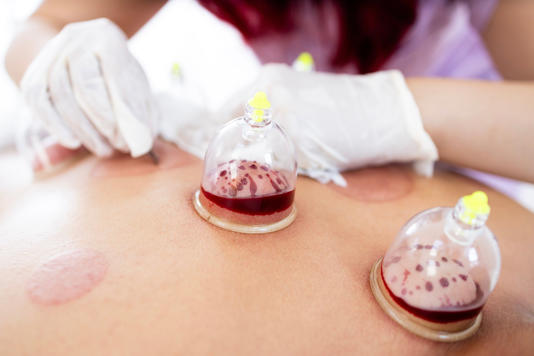
 i_need_contribute
i_need_contribute
Traditional Chinese medicine (TCM) practices like cupping, acupuncture and gua sha have gained global recognition for their purported effectiveness in activating meridians, dispelling dampness and enhancing blood circulation.
Despite their ancient roots, such practices continue to evolve and adapt.
In May 2023, a video featuring a man from Anhui province in eastern China calmly enjoying a special form of cupping therapy went viral.
Do you have questions about the biggest topics and trends from around the world? Get the answers with SCMP Knowledge, our new platform of curated content with explainers, FAQs, analyses and infographics brought to you by our award-winning team.
The process involved a stack of ignited "hotpot styled" big copper cups being placed on his back.
While many online observers likened the scene to an exorcism ritual, the man seemed to be comfortably relishing the benefits of such an innovative adaptation of TCM therapy.
Today, the Post guides you through some of these evolving practices.
While at first glance, they may appear daunting, they are widely celebrated for their healing powers.

Tongue acupuncture is highly valued in TCM circles as providing a window on the state of the rest of the body. Photo: Dr Sun Jieguang© Provided by South China Morning Post
The tongue, a mirror to the body's internal state, is highly valued in TCM for diagnostic purposes. Its colour, texture, and coating can offer clues about a person's overall health.
A slightly greenish coating suggests poor blood circulation, a swollen, red tongue may indicate excessive internal heat or potential heart issues, while a purple tongue with black spots is indicative of cold limbs and irregular blood flow.
Discovering the close relationship between the tongue and the brain, Dr Sun Jieguang, a therapist and researcher from Hong Kong, invented the practice of tongue acupuncture.
He identified 49 acupoints on the tongue and developed the method of applying a needle to a patient's tongue and going through the acupoints swiftly as a form of therapy.
The treatment is relatively quick as patients simply need to stick their tongue out for a few seconds to receive it.
While this unique treatment may seem daunting to the uninitiated, it is acclaimed for its efficacy in addressing brain disorders such as paralysis, autism, or damage caused by epilepsy.

Equally shocking to the uninitiated is the use of hammers to effectively treat bone fractures and dislocations. Photo: HHCCTEO© Provided by South China Morning Post
Bone-setting in TCM employs a range of manual techniques such as pushing, pulling, pressing and kneading.
Traditionally used to treat fractures and dislocations, these methods have evolved to address misaligned or slightly dislocated bones, which have become common due to the sedentary lifestyles of modern society.
For instance, cervical spine bone-setting involves the practitioner firmly gripping the recipient's neck with both arms and swiftly rotating it to realign the bones.
Despite the "click-click" sounding frightening during the procedure, many patients report a significant sense of relief and rejuvenation afterwards.
Some people even claim to "grow" taller after undergoing a full-body bone-setting treatment.
A specialised form of this practice, known as "hammer bone-setting," has emerged from these traditional techniques, where practitioners use a small hammer-like tool to precisely strike the patient's back, neck, or coccyx, like hammering a nail.
In a trending online video that attracted widespread attention, a woman lies down with her legs elevated while her coccyx is struck in this manner, making her scream.
Although some people found the video scary, others defended the practice, with one person saying: "My lumbar disc hernia was cured by this big hammer."

Hotpot healing: this bewildering-looking treatment using heated containers of varying shapes and sizes is a time-honoured technique. Photo: Weixin© Provided by South China Morning Post
Cupping therapy, a time-honoured Chinese healing technique, involves placing several glass cups on the skin of a patient for a few minutes.
The treatment is known for alleviating pain, promoting blood circulation and inducing relaxation.
However, an inventive practice in the Chinese folk community, the use of a variety of unconventional vessels, such as cans, water jars, vases and even animal horns, have been employed.
One of these is hotpot-style cupping, where therapists arrange a series of copper cups, like those used in traditional Beijing-style hotpot dishes, across the patient's back.
Pots of various sizes are heated from inside as part of the process.
The novel appearance of this treatment which some say makes the patient look like an "alien monster" adorned with various sizes of copper pots on their backs, has led some observers to humorously compare the therapy to an exorcism ritual.
Some online observers even recalled ancient punishments, saying: "This reminds me of ancient torture methods like boiling people alive."

Bloodletting is also widely used in traditional Chinese medicine, but patients must be careful not to overdo it. Photo: Shutterstock© Provided by South China Morning Post
This traditional Chinese therapeutic practice, typically involves pricking the skin at specific acupoints, followed by placing cups on the skin to create suction.
Used for a range of ailments, including neck, shoulder and back pain, colds and digestive issues, as well as for enhancing general health, the process is thought to boost circulation and improve organ function.
However, moderation is crucial in its application.
In January, a woman from Wenzhou in the eastern province of Zhejiang was hospitalised with severe anaemia after undergoing bloodletting sessions during which 200ml of blood was drawn weekly over a period of six months.